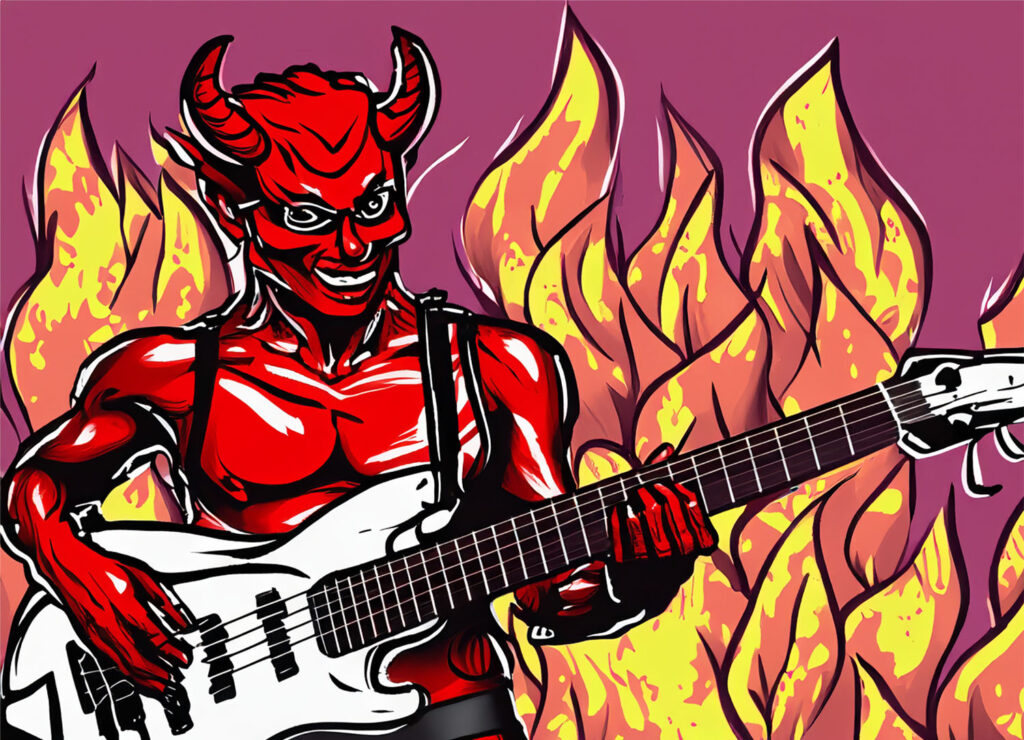What is a tritone?
A tritone, often called the "devil's interval," is a musical interval that spans six semitones or three whole tones. On the piano keyboard, for example, this would be the interval between C and F# or between F and B. The tritone divides the octave exactly in the middle and sounds very dissonant and tense.
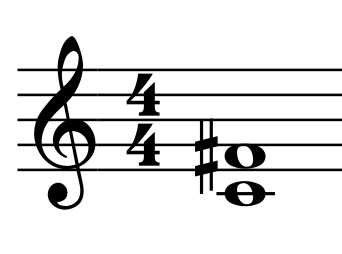
Depending on the context, the tritone is also called an augmented fourth or a diminished fifth. As you can see, the tritone lies exactly between the perfect fifth and the perfect fourth - the two most harmonious intervals of all. Ironically, the interval in the middle is exactly the opposite - it sounds completely disharmonic.
History of the tritone: Why is it called the devil's interval?
The tritone, also referred to as "diabolus in musica" (the devil in music), is an interval that was often avoided in medieval and Renaissance musical practice. The term "diabolus in musica" first appears in 18th-century writings, but seems to date back to an older practice.
The reason for this association is primarily the dissonant, tension-filled sound of the tritone, which was in strong contrast to the preference at the time for consonant, harmonic intervals. Dissonances were considered difficult to master and required musical resolution; they created a kind of restlessness or tension in music. This was in stark contrast to the ideal of musical perfection and harmony that was being sought in music at the time.
Furthermore, in medieval symbolism there was a connection between certain musical tones and spiritual or secular concepts. The tritone, which is exactly half an octave, may have been considered disturbing or "disorderly" because of this asymmetry, contributing to its "devilish" association.
The church played a very important role because of its authority in society and especially in music. The church decided what music was "good" or "bad", what music could be used to praise God, and most songs were composed with a spiritual background. And the church was set: Music should be beautiful and harmonious. The tritone, of course, did not fit into this picture and was therefore associated with the devil or heretics.
The tritone in rock and metal
The "Devil's Interval" fits perfectly with the "music of the devil", rock and metal - no wonder that many popular guitar riffs in these genres use this interval. Artists like Marilyn Manson, Metallica or Black Sabath have used this interval to create their sinister sound.
Marilyn Manson uses a tritone in the main riff on the E guitar in his song "Beautiful People" - the guitar constantly alternates between E♭ and A (the distance is the same in both directions, as it is exactly half an octave).

By loading the video, you accept YouTube's privacy policy.
Learn more
Black Sabbath also play with the devil's interval in their song "Black Sabbath": The main electric guitar riff consists of root, tritone and octave. This creates a constant tension and a dark atmosphere in the song.

By loading the video, you accept YouTube's privacy policy.
Learn more
And in the main riff of "Enter Sandman" by Metallica, there is again a tritone between the root (E) and the B♭, along with a few other notes. But the tritone, the B♭, is what makes the riff so interesting.

By loading the video, you accept YouTube's privacy policy.
Learn more
As you can see, the devil's interval is a very popular figure in metal, especially in dark songs. It sounds very strange and can create a lot of tension and fear. But there is another side to this interval that is not quite as "dark".
The Tritone in Chords
In music, context is always important - what sounds one way here can sound completely different in another song. And the same goes for the tritone - depending on how and where you use it, it can sound completely different.
Let's take a look at a semi-diminished seventh chord. It consists of the root, a minor third, a diminished fifth (tritone) and a minor seventh:
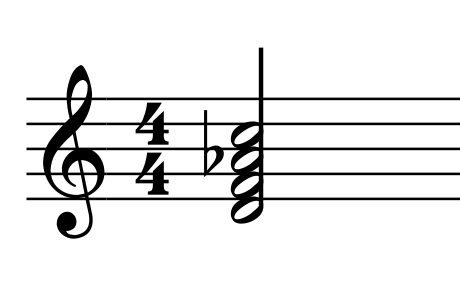
On its own, this chord sounds rather dissonant, but in a musical context it can be very emotive and emotional. The semi-diminished seventh chord is often used in passages that convey feelings such as melancholy.
The sad effect of the somber opening chorus of J. S. Bach's St. Matthew Passion is created by the half-diminished seventh chord on the seventh beat of the first measure. The chord, dissonant in itself, has an emotional and melancholy effect in this context. It is still relatively unexpected, creating a surprise effect that makes the music varied and exciting.
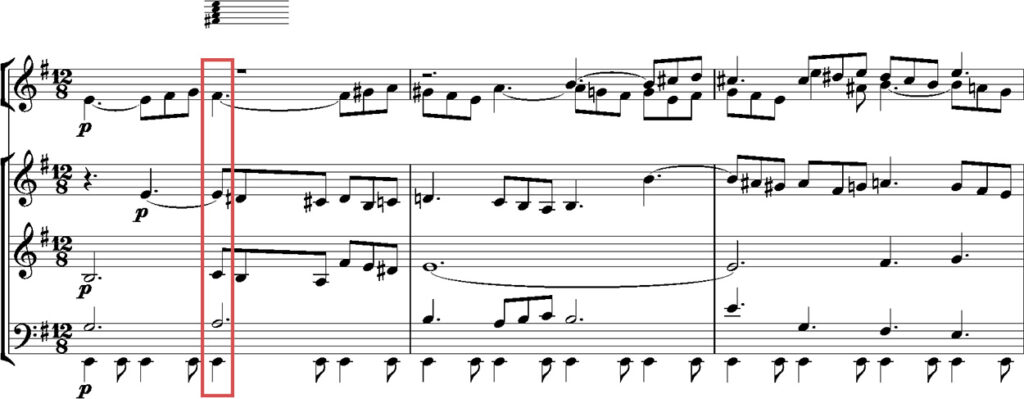
Another famous example of the half-diminished seventh chord is found in a composition that embodies festive rejoicing. This chord appears after the opening fanfare in the Wedding March, part of Mendelssohn's incidental music to A Midsummer Night's Dream. It has a very different, upbeat and celebratory effect.
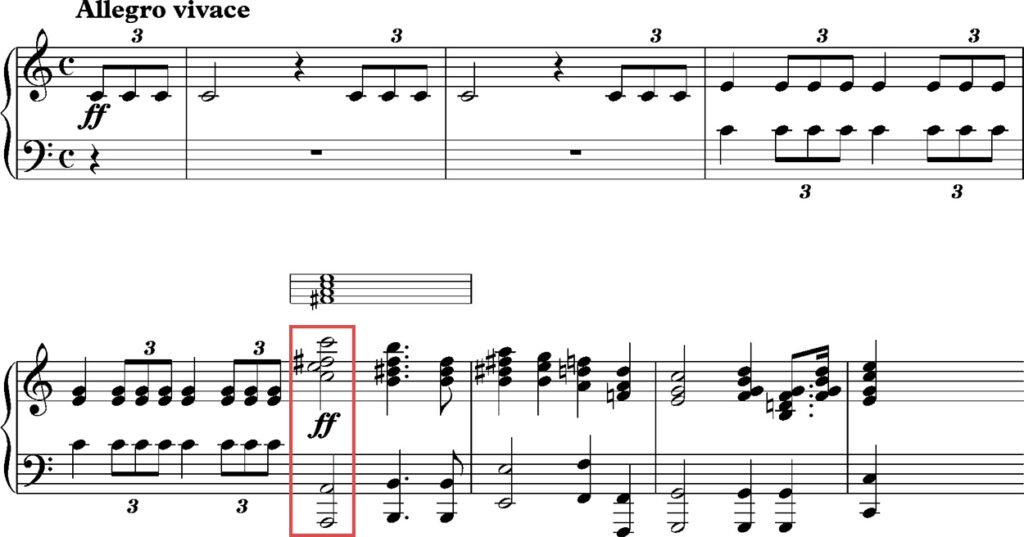
In jazz music: tritone substitution
In jazz, tritone substitution is the replacement of a dominant seventh chord (which can also occur with an altered fifth and/or ninth) with another seventh chord whose root is three whole notes away from the root of the chord being replaced.
For example, in C major, the dominant chord is G7, which can be replaced by its tritone, D♭7.

There are several reasons for this change:
- The most important thing is that the two chords have the same third and seventh, but in reverse order (in the example G-B-D-F and D♭-F-A♭-B), and that the third and seventh of a chord are considered very characteristic.
- The root and fifth of the replacement chord (G and D in the example) are the augmented fourth and minor ninth (augmented octave) of the replacement chord, respectively, and the same relationship applies to the root and fifth of the latter in relation to the former.
- If one of the two chords is modified (with augmented fifth and ninth or augmented fifth and flat ninth), you can, for example, melodically apply the same scale (augmented Lydia) to both chords.
- The substitution in the II-V-I sequence allows the bass to play the D-D♭-C progression in falling semitone intervals, which is very common.
This substitution has become so common in modern jazz that it is often used for dominant chords that are not in the context of a II-V-I progression.
More facts about the tritone
- If you look at the circle of fifths, you'll see that the fundamental notes of opposite keys always form a tritone - the greatest possible harmonic distance.
- Looking at it from the point of view of harmony theory, every dominant seventh chord has a tritone between the third and the seventh note, e.g. E-flat on C7.
- The famous "blues note" of the blues scale is the tritone of the root note, and it is this note that makes the scale so characteristic.
- In the Hungarian scale (a variation of the minor scale), the tritone is also the characteristic interval that makes the scale so unique.
Conclusion
As you can see, the tritone interval can have very different effects - it doesn't always have to be evil and scary - it's just a question of where and how you use it. Despite its original image as the "devil's interval", it has found its place in many styles of music. Its dissonant character adds tension and emotion to music, ranging from somber melancholy to festive joy. From classical to rock to metal, the tritone is a powerful musical tool that adds interest and excitement to any composition.





